Your favourite suit, your wedding dress, your little ones first t-shirt you didn’t want to lose. Is there anything worse than storing clothes you think are safe and sound only to find later they’ve grown arms and legs? I mean like, literally?
Luckily it doesn’t have to be this way. The world can be a cruel and unforgiving place but for every action, there is a reaction… Or is it for every problem, there’s a solution?? Either way, here’s our top trade tips on how to keep your garments fresh, clean and untouched by nature while your luggage is in storage.
PS: Our top, TOP tip is at the bottom of the page so whatever strategy you use to store your clothing and other favourite fabrics, make sure you stay till the bottom for the secret sauce.
Preparing Your Clothing For Storage
- Keep Clothing Cool, Dry & Away From Pests
- Make Sure Clothing Is Clean & Dry Before Packing
- Pack Your Garments & Fabrics Properly
- Choose The Correct Containers For Storage
- Choose A Suitable Storage Space For Your Clothing
Storing Clothes Safely | Long Or Short Term
- Storing Garments & Light Clothing In Vacuum Bags
- Storing Fabrics & Footwear In Plastic Storage Boxes
- Storing Clothes In The Loft Or Attic
- Clothes Storage In A Garage Or Shed
Bonus Storage Tips
First and foremost, the single best way to store clothes safely is to simply make sure they’re kept dry, cool and away from pests. There are several cheap and easy ways to go about this too so getting it right isn’t difficult. Even if you’re looking at long term storage.
Before we get into the real meat of the article though, here are a few bonus tips on what you should do BEFORE you even pack a sock.
Make Sure Clothing Is Clean And Dry Before Packing
This might put you off your breakfast but sweat, grime and sticky fingers wiped on a kiddies sweater are all nutrients to bacteria, fungi and mould.
Make sure you thoroughly wash and dry any clothing you’re packing so your garments don’t become fast food joints for the micro world.
How To Pack Your Clothing For Storage Properly
Most fabrics like to breathe so it’s never really a good idea to jam as many garments into as tight a space as you can.
It’s always better to fold clothing loosely into a container to help it breathe, retain its shape and stay fresher for longer.
Choose The Right Containers, Cases Or Boxes For Storage
Think of where you’ll be storing your clothing. Cardboard is defenceless against damp, mould, bacteria and critters. Plastic bags tear easily and are no match for rodents.
Even if your storage area is perfect in every way, we only recommend plastic containers just for the extra reassurance.
Choose A Suitable Storage Space For Your Luggage
Your storage facility should ideally be clean, dry, dark and cool. These are the best conditions for any items that will sit in storage for any length of time.
If you’re not spoiled for choice though and must make do with whatever storage you can muster up from friends and family then do consider your options as to how, and in what containers you will be storing your fabric items.
Storing Clothes In Vacuum Bags
These are your best friends if you get the good ones. Cheaper ones will in a short time let air leak into the bag and with it, moisture – so if you opt for vacuum bags to store your clothing, do pay the extra pennies and get the ones that do the job.
Fun Facts About Mould n Stuff
Mould spores and bacteria occur naturally & they’re everywhere. They’re in the air we breathe and on everything we touch so of course your first line of defence is keeping things clean, dry and inhospitable to micro life.
It’s not until conditions are right that they can start making a mess so choosing vacuum bags to store clothes and other fabrics gets our green light.
Spedalon Vacuum Storage Bags For Clothing
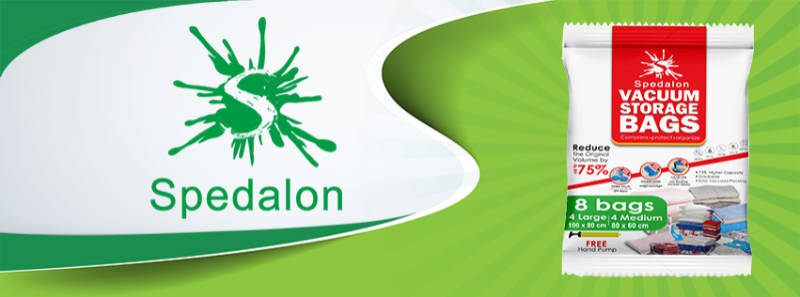
Our top pick for vacuum bags is from Spedalon. Why? Well, above all else these vacuum bags come with a LIFETIME replacement guarantee. If any of their bags fail, the company offer a no quibble one for one exchange for the defective item.
Coupled with that, the bags feature a double zip seal and a triple seal valve so when the air is out of these babies, it’s proper out. Natural levels of mould, mildew and bacteria trapped inside will have little else to do but to hang around wishing they were somewhere else.
Also included is a handy handheld travel pump for ease of use on the move.
Spedalon vacuum bags are available on amazon: Spedalon Vacuum Storage Bags
SpaceSaver Vacuum Storage Bags For Clothing
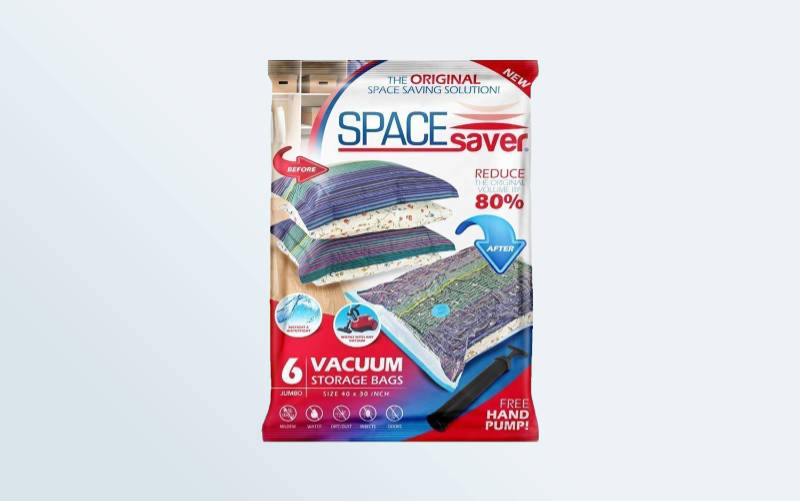
Close runners up are from SpaceSaver and their bags do exactly what they say on the tin. They’re very durable, can be reused over and over again and do come with a handheld travel pump so deflation is a breeze.
In fact, the only difference between the two is that Spedalon offers a lifetime guarantee with their products. SpaceSaver might do, but we couldn’t find it.
SpaceSaver vacuum bags are available on amazon: SpaceSaver Vacuum Storage Bags
The Downside To Vacuum Bags For Storing Fabrics
Sucking every ounce out of air out of that bag might be a bad idea depending on the types of fabrics stored in it. Some fabrics fare better than others but for silks, suits and delicate items, it’s always best to leave just a little breathing space in there.
Also, even the best vacuum bags can leak if you don’t check and double-check that you’ve actually sealed it properly. And how do you know? Well, you don’t.
Other than checking the bag in a couple of weeks to see if it has inflated in any way, there’s no other real way of telling.
This wouldn’t be an issue for short term or simple under bed storage but for long term storage, then it’s something you really want to consider.
Clothes And Other Items Not Suited To Vacuum Packed Storage Bags
Vacuum bags aren’t suited to all types of fabric and clothing. Here’s why.
Clothing Made From Natural Fibres
Although not really a problem if you’re only storing your items short term, it’s not recommended to store wool, fur or other clothing made from natural fibre for any serious length of time in a vacuum bag. Typically around 6 months+.
These include:
- Coats (Wool & Fur)
- Knitwear
- Jumpers
- Sweaters
- Dresses
- Cardigans
Natural fibres require air to retain their shape. If you do use vacuum bags to pack your natural fabrics, then you should at least air them regularly.
Puffy Items
Here we’re talking air-filled items with a natural down that absolutely require air to retain their shape and function.
These include:
- Sleeping Bags
- Pillows & Bedding
- Jackets
- Coats
There are plenty of puffy items with completely synthetic stay puff fillings that can handle being vacuum-packed but natural down items absolutely require air to stay intact.
By sucking the air out of these types of items then it’s wholly unlikely you’ll ever be able to re-puff (for the lack of a better expression) them again later.
Shoes
This is a kinda no brainer. Leather, suede or fabric you should never vacuum pack shoes of any guise for storage.
These include:
- Men’s Shoes
- Women’s High Heeled Shoes
- Boots
- Running Shoes
- Sandals
You could of course vacuum pack anything you like, but what would shoes really look like after a few months of being completely crushed within an airless vacuum?
Leather & Suede
Leather is, as is suede, made to be beautiful, and they are. From stunning Italian jackets to Gucci handbags to the value of a small apartment, one thing you shouldn’t ever do is vacuum pack these items.
These include:
- Handbags
- Shoes
- Jackets
- Trousers
- Skirts
- Coats
Neither leather nor suede bode well under pressure. These materials require air as well as natural ambient pressure to retain their shape and good looks.
Plastic Containers For Storing Clothes
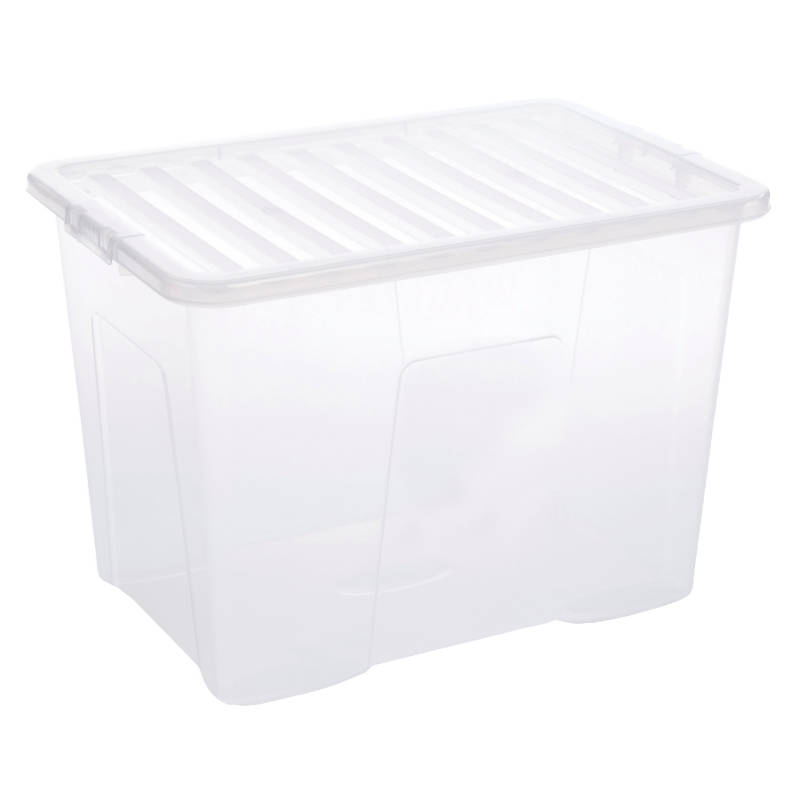
Is it OK to store clothes in plastic containers?
Some people would say no but we say hell yes. As long as you throw in a couple of silica gel sachets before you seal the lid then these things are strong, weatherproof, damp proof and generally amazing for storage of any type.
Plastic storage containers really are the bee’s knees when it comes to storing clothes and keeping fabrics clean, safe and dry – the only caveat being you do need a handy roll of good quality duct tape lying around to seal the lid and make sure it’s completely airtight.
They’re also strong, cheap and you can pick them up anywhere from the B&M store to the B&Q. In fact, I’d go so far as to say that storage containers are the better option as even the best vacuum bags can leak given enough time.
And once you seal the lid with bombproof duct tape? Nothing and nobody is getting in or out of that puppy.
Duct tape to seal plastic containers is around £5 for a 50m roll and storage containers are around the same price for the 80L size. You can fit more into them than you can into a vacuum bag and they’ll never leak. Ever.
Plus they stack perfectly so unless something physically knocks them over, they won’t sag, lean or topple.
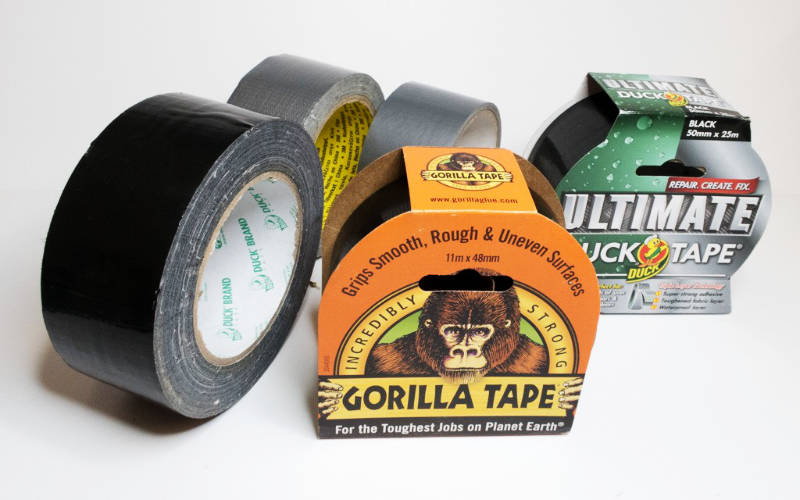
To use, simply fill the storage container with clothes or other fabric items, no compression required, and seal the lid properly with the tape. Job done.
The Downside To Plastic Storage Containers
Well, is it really a downside though? Yes, but only if saving space is close to the top of your list of things to consider when storing clothes.
The only drawback of using plastic containers that can’t be compressed is of course the space factor. If you’re travelling then large 80L tubs probably aren’t for you but if you’re looking for general long or short term storage, then these are our top picks.
Storing Clothes In The Loft Or Attic
Lofts & Attics are excellent places to store clothing provided you take the precautions above. They’re normally dry, clean, sheltered and warmed by the glowing heat below. That said, they’re not without their own issues.
9 times out of 10 in any normal home, the loft is little more than the bare underside of an average roof so there’s usually no flooring or insulating wall sheathing installed. All you really have to work with are balance beams to stand on and cross beams supporting the apex.
Loft Insulation | Fibreglass & Rock Wool
Problems with storing fabrics in the attic begin and end with rogue fibreglass particles that are light enough to float freely in the air for days if disturbed. They get into utterly EVERYTHING and of course, as fibreglass does not dissolve in a wash, once it wedges itself into the seams and weaves of fabric it’s pretty much there forever.
And NOBODY likes fibreglass…
Plastic Bags | Enter The Handy Bin Liner
Bin liners are cheap & cheerful and these budget plastic bags are impregnable to fibreglass and rock wool particles. As dampness probably isn’t an issue in your loft area, storing clothes in good quality plastic bags or bin liners should be more than enough to keep your garments clean, safe and dry.
Do double, or even triple bag anything your store in plastic bin liners though – with the first bag going into the second bag upside down. This helps create and extra level of assurance that absolutely no stale air or particles will find their way into any clothing stored in them.
Sports Bags
Another great choice for garment storage are durable, easy to come by sports bags. Some have the fill capacity of an entire wardrobe and have strong carry handles for easy moving.
Suitcases For Storing Luggage
Of course suit cases, why would you not use them? They’re made for the task after all. The only downside to storing clothing and other fabrics in suitcases is that they can get really quite heavy, so lifting and shifting one into the loft area could be interesting.
They also require a completely dry environment such as a indoor closet or attic that doesn’t suffer dampness or humidity. They are fabric after all and fabric will literally suck moisture from the air & fabric + moisture = mould.
Vacuum Storage Bags For The Loft
If you have the pennies to spend then do consider vacuum bags for storing clothes in the loft. They’ll keep your fabrics safe, clean and are a bulletproof protection barrier between dirt and dust from the outside and whatever is stored on the inside.
Plastic Storage Containers In The Attic
Excellent choice and again, as most loft and attic areas don’t suffer from dampness, you wouldn’t even need the duct tape. You could use it just out of good practice, but you really shouldn’t need it.
Storing Clothes In A Garage Or Shed
Ahh… How many times have we been hired to remove items stored in a garage or shed only to find everything rotten with mould? And not just mould, but green furry alien mould that looks like it’s 2 evolutionary steps away from being able to stalk small prey.
Sheds and garages by their very nature are inherently damp and dampness, of course, is the enemy and real Apache country for the micro world.
Although we would never recommend it, this isn’t to say you can’t store your property in a garage or shed though. It’s more just a case of taking extra precautions to make sure your clothes and other items are fully protected against ruthless fungi who don’t care who Louis Vuitton is. Food is food.
And by extra precautions, I mean our secret, (but not really secret) tricks of the trade that should make sure your clothes are kept safe, dry and spore free while being stored in damp garage areas.
Our Secret Sauce For Storing Clothes Safely – Silica Gel
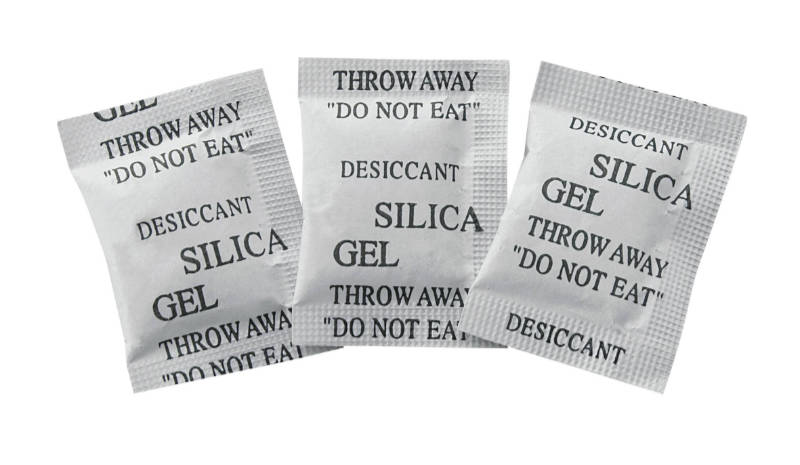
Our top TOP tip. The “magic juice” to storing clothes safely, particularly over a long period of time are these little life-savers.
Silica gel packets are small, cheap and a handful of them will suck the moisture out of a jellyfish in 30 seconds flat. Not that we’ve ever done this to a jellyfish, or any other creature but you get the picture of just how good they are in maintaining moisture levels.
Silica Gel For Clothes Stored In Vacuum Bags
If you’re opting for vacuum bags, place 2 or 3 10g silica gel packets in the bag before you seal it. Once the bag is sealed tightly, any moisture left in there will quickly be absorbed by the gel.
Silica Gel For Clothing In Storage Containers
Mould, mildew and bacteria will thrive in any damp & poorly ventilated area. Deprive them of moisture and you’ll put a dead stop to anything growing in your storage bags or containers. Washing clothes before storing them also puts the brakes on a mould outbreak later.
Weird source, but there’s a good article on mould prevention from NHS Uk here.
Throwing 4 or 5 10g silica gel sachets into an 80L storage container will be more than enough to keep your clothes clean, dry and free from mould and mildew.
Once you place and seal the lid with duct tape, again, any natural levels of moisture left in there will be quickly absorbed by the silica gel.
Silica gel sachets are also available on Amazon and as they’re all made from the same stuff, silica, any brand would do.
Storage FAQs
As a removals and storage company, we get asked A LOT about how to store things safely – particularly clothing. Here are some of our most commonly asked questions…
How Long Do Clothes Last In Storage?
Indefinitely. If you follow a few simple guidelines when preparing clothing for short or long term storage then there’s absolutely no reason why your garments shouldn’t be in the same condition as when you packed them.
As stated earlier though, vacuum bags (although fantastic space savers) might leak over time. If you’ll be unable to check your vacuum bags now and then we’d recommend one of the other methods for complete peace of mind.
Will Clothes Get Ruined In A Storage Unit?
The short answer is maybe…
If you choose to store your clothes and other garments in a damp place with poor ventilation and don’t take simple precautions to keep your items dry, clean and away from things that’ll view them as food then yes, your clothes can get ruined in a storage unit.
If however, you pack your clothes properly into suitable containers, make sure they’re not exposed to external moisture and they’re placed in a well-ventilated spot then there’s no reason for your clothes to deteriorate in any way.
How Do You Keep Your Clothes Fresh In Storage
The simplest and most efficient way to make sure your clothes remain fresh in storage is to make sure they’re thoroughly clean and dry before you even begin packing them.
If you’re preparing clothes for long term storage, wash them and make sure they’re completely dry just beforehand.
Use a handful of silica gel sachets too. This will draw any moisture out of whatever container is protecting your garments after you seal it shut.
What Is The Best Containers For Storing Clothes?
In An Ideal Environment
If you know for a fact that dampness isn’t going to be an issue then, of course, we would suggest good quality suitcases. They’re made for the job after all. They are only recommended for clean dry areas though – they won’t stand up to dampness or mould in any way.
In A Less Than Ideal Environment
If your storage environment isn’t ideal, then we’d have to recommend the large plastic storage containers available from most decent hardware stores.
Some are made with fragile plastics though so you would definitely want to buy ones from reputable stores such as B&Q or Wickes. This is assuming that storage space isn’t an issue.
If You’re Short On Space
If you’re short on space and every cubic inch counts then you can’t really go wrong with top quality vacuum bags. They WILL hold their shape for months and protect whatever is inside them but being sealed with zippers, they don’t hold forever.
If you have regular access to your storage area then this shouldn’t be a problem as you can check and reseal them if necessary.
Not Recommended
Bin liners and plastic bags are cheap, cheerful and handy as heck in an emergency however you’ll never really hear us recommend them for storage. Especially for clothing and fabrics.
Not that they’re particularly bad in an already dry, clean environment – it’s more a case of simply having infinitely better alternatives available for just a few more pennies.
Other Resources For Storage Ideas
We hope you found this guide useful and thanks for staying till the end. We also have some really good info on storage strategies in another excellent article Top 10 Tips Tor Moving House so feel free to check that out. Packed with hints, tips and checklists for home movers.
Also, feel free to check out our handy guide to choosing the correct moving company when moving home: Avoiding The Cowboys.
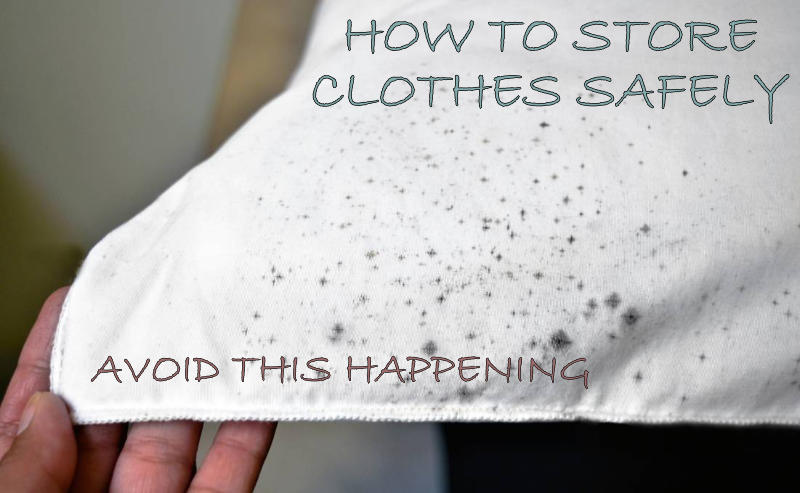
Thank you for informing me that not all vacuum bags can last forever. I thought of using these for our first attempt at storing clothes, but reading how it might not be a fool-proof solution, I might need to watch over that storage a bit to make sure that it’s handled well. As soon as I find a self-storage facility in the area, I’ll start packing my clothes with as many methods as you stated.
No worries Afton, glad you found the info useful.